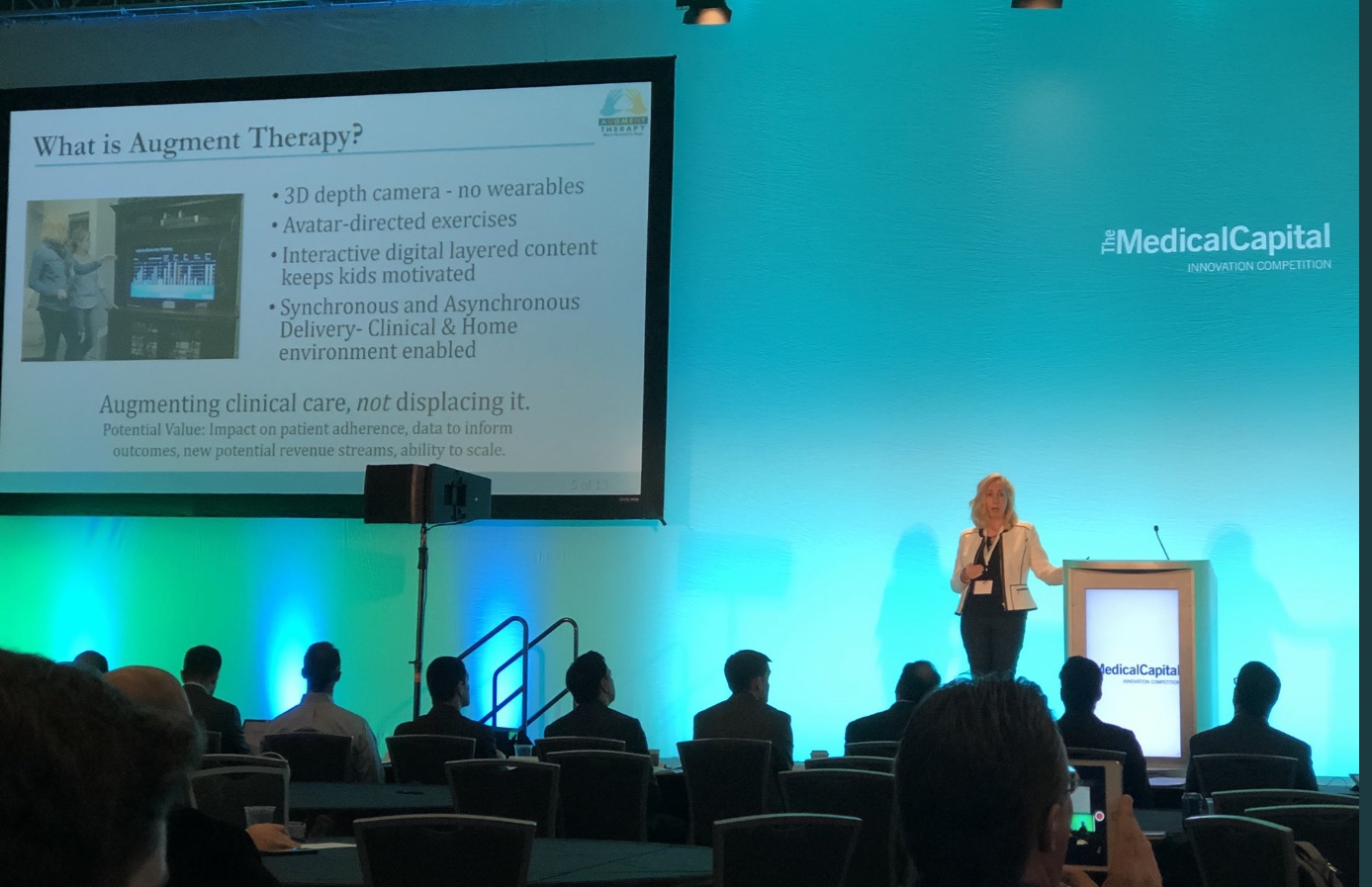The use of video gaming has increased a child’s interest in following a therapy program and greatly decreased the rehabilitation timeline.
Lindsay Watson is a physical therapist who spent 20 years working with children. She noticed that pediatric physical therapy needed updating and made more relevant for kids, then she did something about it.
”My years in practice brought me to the conclusion that I needed to solve unaddressed problems, particularly in the healthcare delivery for children. I envisioned what would solve those problems and finally decided to put my fears aside and just go for it, to make a difference and solve those issues myself.”
Lindsay always felt that the best therapists pay more attention to what interests each child. In turn, she then leverages that to gain the child’s trust and attention during the therapy session. Parents know that technology has become a driving force for children. Lindsay sought a way to use children’s fascination with video games to create a program to better gain access to the child’s mind/body connection during therapy.
When she started, there were no tools, or APPs available. She watched and even played hours of popular children’s video games, such as Pokemon Go.
From that she developed an augmented therapy plan, and her company, Augment Therapy, Inc, which uses common elements within children’s video games and combines them with evidence-based exercises for therapeutic benefit.
“In Augment Therapy, we create immersive technology experiences for the child for therapeutic benefit. Children are engaged through an application on an iPhone, or an iPad. Using patient-facing augmented reality games, we modify their environment and the therapy experience. We are doing basic physical and occupational therapy exercises, but we put them in a gaming environment, and can simultaneously capture data points on their movement, for later analysis.”
Lindsay has even been able to adapt her software platform for use at home so that the child doesn’t need to visit the clinic. Using virtual telehealth, she can remotely monitor the child’s reactions to the games and gauge their progress.
The game is designed with the child as the star.
“The child is the star of the show, or game. We use an actual image of the child, capture it and put it on the television screen, then we alter the environment. For example, their family room now becomes a swamp, and they must jump into it. In one exercise, we put the child into a virtual snow globe, where the child must shift their weight, onto a leg that has been perhaps surgically repaired and needs therapy, to make it snow inside the globe.”
This takes the boring and sometimes painful drudgery of therapy out of the equation for children. It makes a hospital room, or clinic more exciting. Children actually look forward to the upcoming session.
Lindsay’s programs can be used for various conditions. Children with Cerebral Palsy, Down Syndrome, Autism, Developmental Disabilities, or other neurological issues can be treated by therapists using this method of therapy.
“Many people think therapy only helps Little Timmy throw a ball faster for Little League. But the kind of things we are typically working on are far more imperative to daily life. The kind of questions many of our children are facing are, ‘will Little Timmy ever walk? Will he ever run or jump?’ When that level of importance is on the line and families bring their child to therapy week after week, year after year- the experience and the results of their care matters on an even deeper level.”
One of the overall benefits of using video games for pediatric therapy is to induce the child to engage the exercises on a regular basis. By using the therapy games at home, between clinic visits, a child can potentially decrease the rehabilitation trajectory to a much shorter time frame.
As with many things, the COVID pandemic and social distancing drastically accelerated the use of virtual in-home therapy and Lindsay’s use of telehealth programs. Therapists were quick to use available video conferencing programs that were available to keep in contact with their patients, but they were not engaging enough for children.
“I think everyone quickly recognized that virtual therapy alone is not the ideal for most patients, but a combination of virtual, in addition to, clinical visits is ultimately the best solution for both healthcare providers and patients. And the experience of that care is even more important when it needs to engage a patient for a long period of time.”
Lindsay’s therapy program is entering an exciting time. Her company, Augment Therapy, is beginning to receive other therapists as clients, plus one Ohio hospital and two educational services are currently using her program. In a few months, another hospital on the west coast, as well as, five additional hospitals will deploy the programs, as well.
“We were accepted into a tech accelerator program called Kids X. We were one of only 13 companies invited to join the first pediatric digital health accelerator in the country. From this we were paired with several hospitals, and it has been the most incredible experience. They have taught us to do things better and more efficiently, plus gave us access to partners that have facilitated the technology to move forward much faster.”
Even though Lindsay describes herself as the opposite of tech-savvy, she understands how these programs need to work. Early in her mission, she sought help and found a partner to handle the technology side.
“I met my co-founder, Steve Blake, through a friend of a friend. I reached out to an old friend of mine from college, who was well connected in the technical world. She, in turn, reached out to her network, and we found Steve. We connected immediately and he developed a prototype. Augment Therapy was really born, once we connected.”
Along the way more mentors have helped Lindsay on her journey. The company has won several awards including, GCP’s “Most Promising Startup,” in 2020. They have participated in multiple tech accelerators nationwide, and the company was recently mentioned in Forbes magazine.
Lindsay has even witnessed the power of Augment Therapy, firsthand. Her four-year old daughter contracted a septic bacterial infection in her hip, which required emergency surgery. Therapy was required and her daughter was not happy with the exercises, nor the hospital therapists.
“When we were able to take her home, I introduced her to the new software, and she instantly completed all the exercises that she had been refusing to do while screaming at the hospital therapist. I knew then that this was the medium, for the comfort of children, that I was meant to do.”
Lindsay’s vision is to get this rehabilitation software to as many children worldwide as possible and she is well on the way to realizing this goal.
“Our team of people are really the best part of this company. These people are so focused on making life better for children. We’re on this rocket ship together and if we really hit the stars, it’s because of these amazing people. Not only are they skilled at what they do, but they are tirelessly dedicated to improving the lives of these children.”
Lindsay currently resides in Chagrin Falls with her husband and three children. She was named one of Cleveland’s Notable Women of Technology, and Cleveland.com’s HomeGrown Hero in the category of Augmented Reality and Artificial Intelligence.
If you would like to learn more about Augment Therapy visit the website: https://augmenttherapy.com/.
We thoroughly enjoyed our conversation with Lindsay. You can watch it on YouTube or listen on iTunes.









